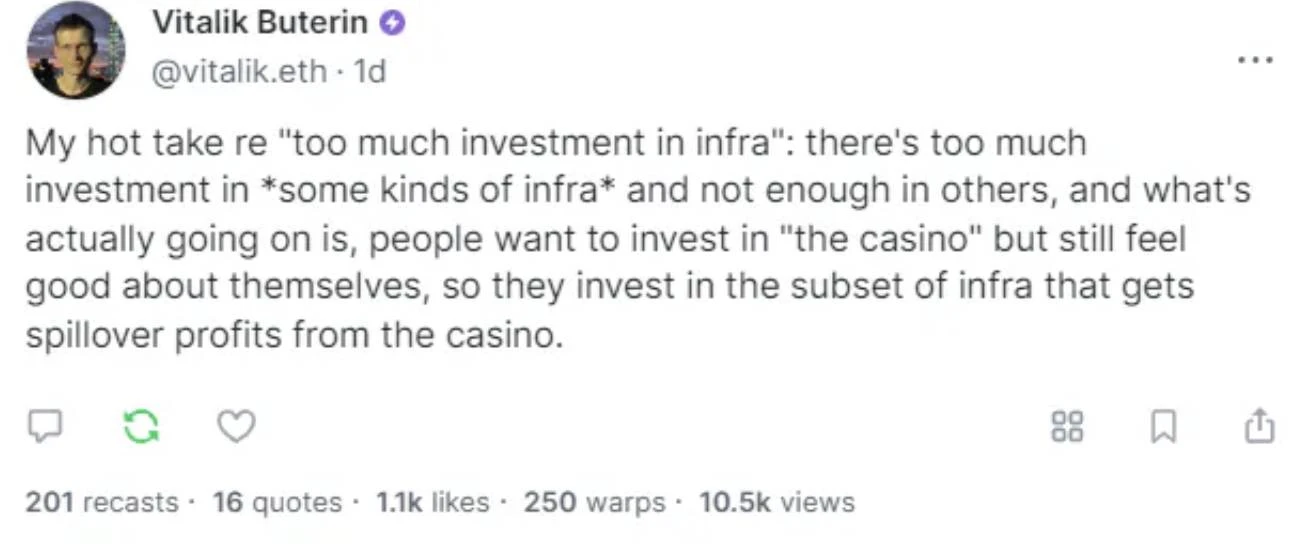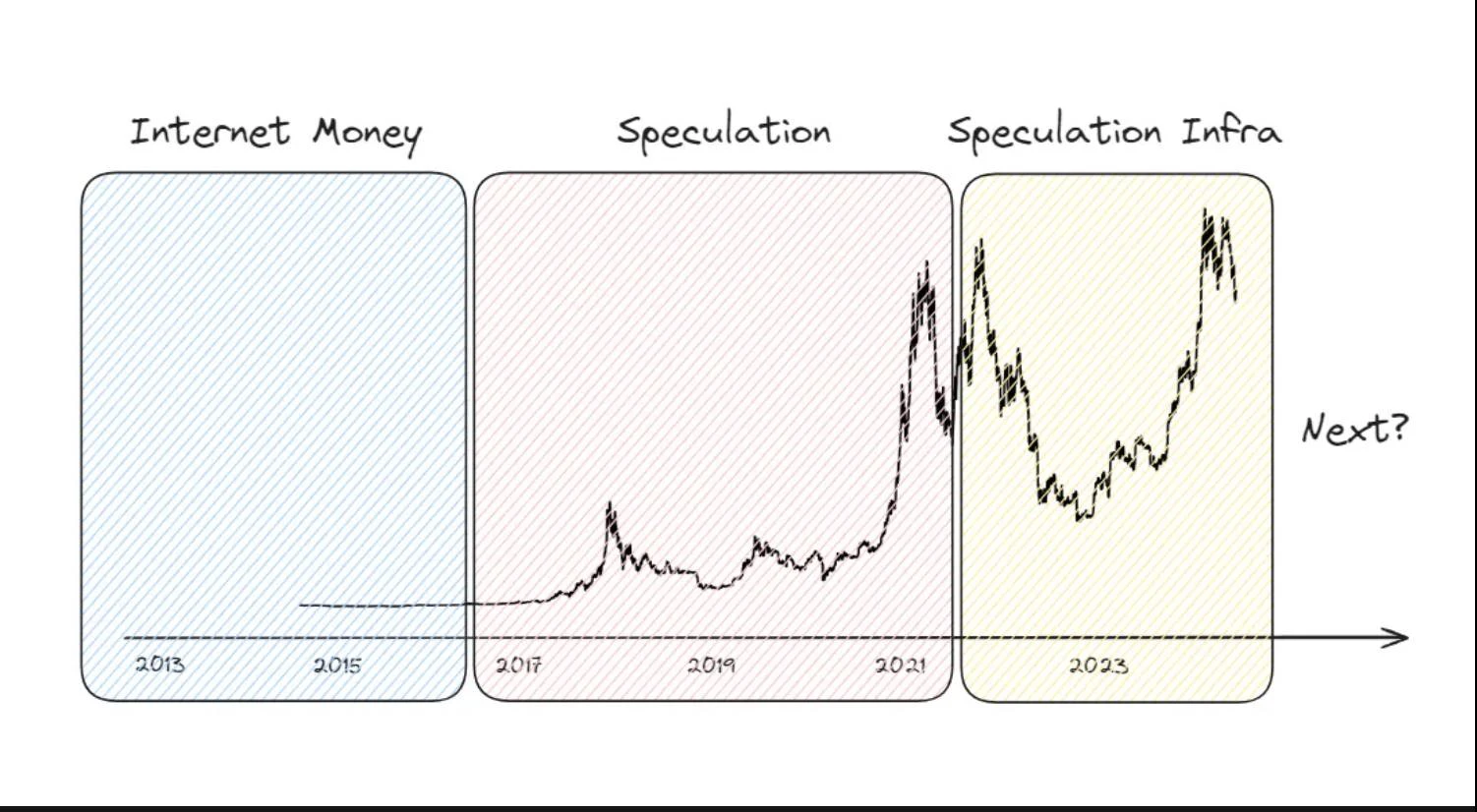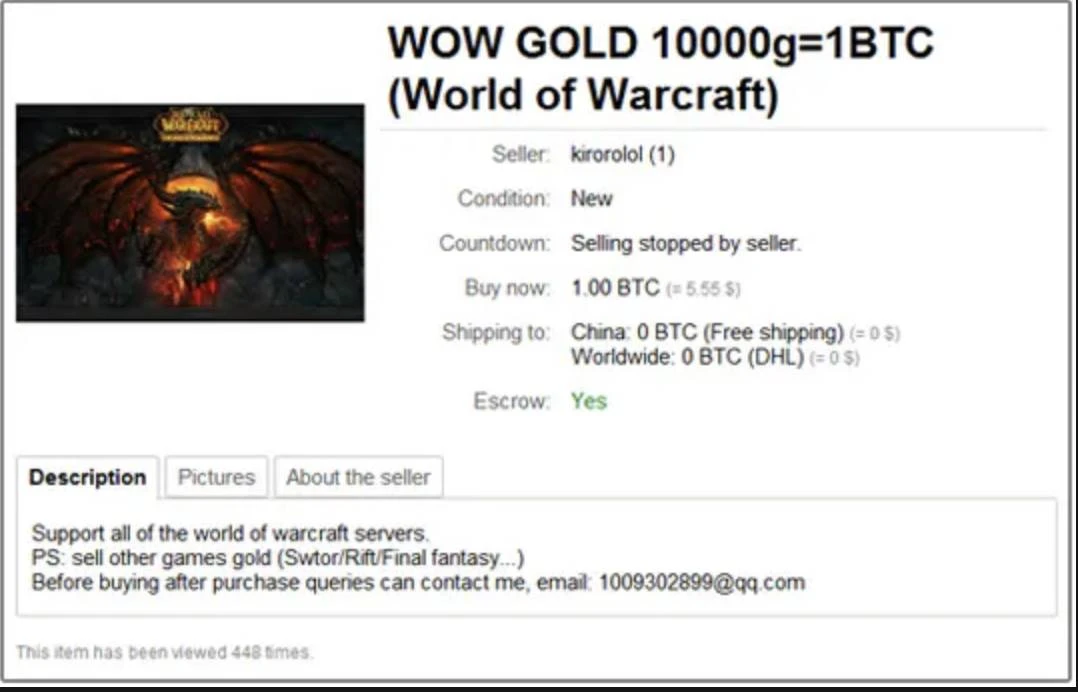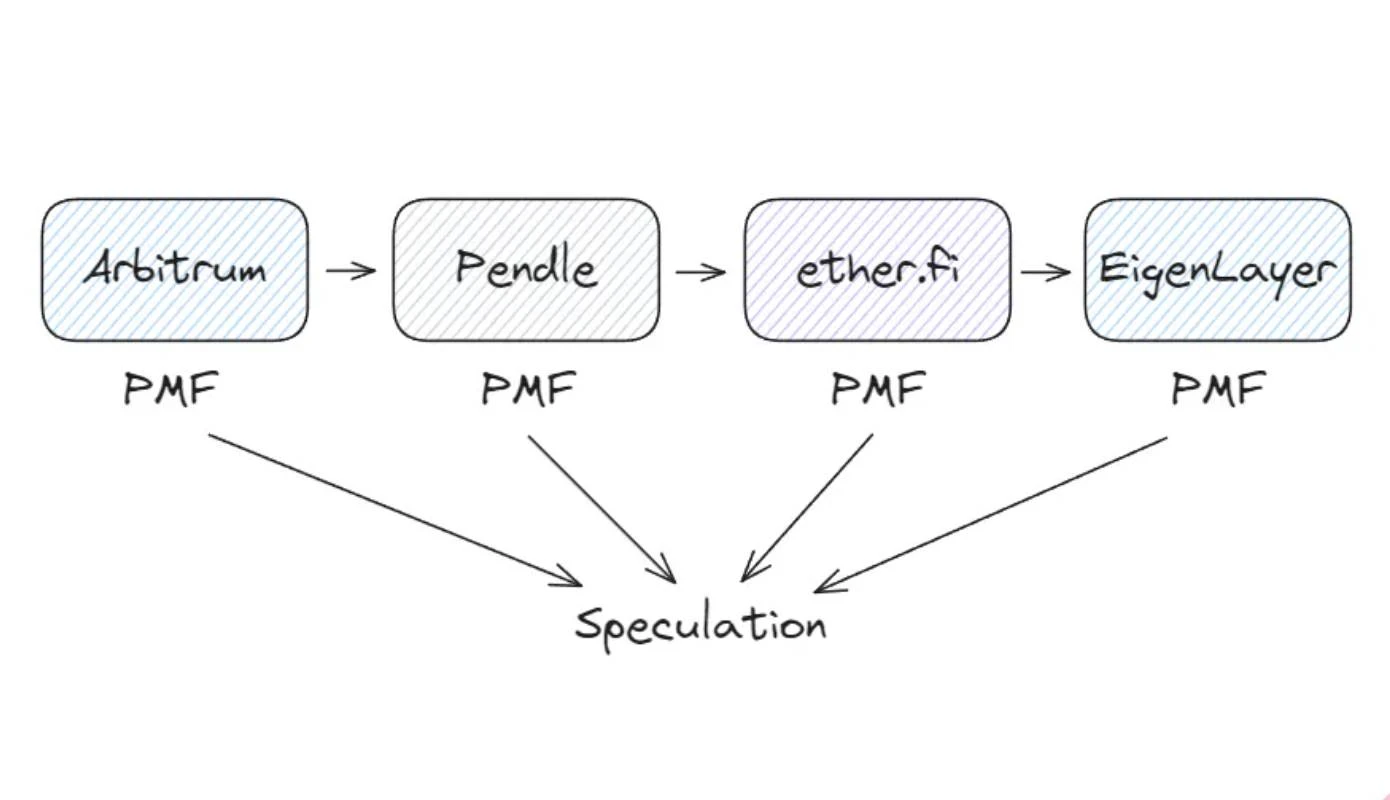Bakış açısı: Kripto ürün uyumu esas olarak spekülasyondan gelir, aksi takdirde yalnızca az sayıda kullanıcıya hizmet verebilir
Orijinal yazar: 100y
Orijinal çeviri: TechFlow
Current situation: Either speculate or focus on the niche market.
We are in the middle (and perhaps nearing the end) of the fourth major market cycle. The crypto market has grown significantly, with BTC ranking 9th among overall assets ($1.26 trillion) and ETH ranking 25th ($409 billion).
This naturally raises the question: Has a market of this size really found product-market fit (PMF)? In 2020-2021, most people would say no. However, given the maturity of the market and the emergence of various protocols, many people may now say yes.
My answer is mixed. There are indeed some protocols that generate significant revenue even after taking into account token incentive expenditures, which makes me inclined to say yes. However, I must point out that the PMF of most of these protocols relies heavily on speculation. In contrast, protocols that are not related to speculation often have difficulty finding broad PMF and can only serve a small number of users.
(Source: Vitalik Buterin)
Recently, many people, including Vitalik Buterin, have made similar points on social media. Even those protocols that seem to have found PMF, mainly infrastructure protocols, their PMF usually comes from speculation. In the third bull market cycle, there were many blueprints for using blockchain technology to solve real-world problems, such as the metaverse, P2E, and decentralized social networks. Popular words such as social networks attracted peoples attention. However, despite the market growth, it now seems that the vision of blockchain is shrinking, with only a few enthusiasts left and no real-world problems solved.
1. Is this all about speculation?
It is natural to generate speculation in an emerging industry. While speculation may lead to many victims, it also helps the market and the industry achieve scale. In other words, to justify speculation, the industry must eventually find the right PMF.
Throughout the bull market cycle, the industrys efforts to find PMF seem to have regressed. Although the influx of talent and capital has brought significant progress in regulation, technology, and infrastructure, there are still no blockchain products with widespread PMF. Even with the approval of Bitcoin and Ethereum ETFs, discussions about visions such as decentralization and the metaverse have decreased since the 2021 bull market, and the market seems to be targeting increasingly niche market segments.
Is the markets growth ultimately driven solely by speculation? To find out, I divide the market into three periods.
2. Answer: Mostly
2.1 Internet Currency
(Source: siliconANGLE)
After the concepts of Bitcoin and blockchain first emerged in 2008, Bitcoin was mainly used as a payment method for online transactions due to its censorship resistance and convenience for cross-border payments.
A notable example is Bitcoin鈥檚 use for trading items in MMORPG games with active economies, such as World of Warcraft. Bitcoin is also used for illegal transactions on darknet markets such as Silk Road , involving drugs, weapons, and pornography.
Despite its notable use in illicit transactions, Bitcoin has found PMF among specific groups even without being widely known.
2.2 Speculation
At this stage, cryptocurrencies are primarily viewed as speculative assets. Although projects such as Steemit, Livepeer, Filecoin, and Brave Browser aim to solve real-world problems, the market remains rife with speculation.
The image of Bitcoin as a speculative asset was further reinforced by the price surge from $100 to $1,100 in late 2013. This gave rise to Ponzi schemes such as OneCoin , which resulted in many victims.
The first bull run in 2013 failed to attract widespread attention, but the second bull run in 2017 attracted global attention. BTC and ETH reached significant market capitalization, especially in the Korean market, where speculative trading was very active. During this period, projects such as EOS, ADA, TRX, and BNB raised a lot of funds through ICOs, although many ICO projects were actually scams.
As the market was built on speculation, the subsequent crash led to a prolonged crypto winter. However, projects built during this period and post-COVID-19 quantitative easing helped the market recover in 2021. DeFi protocols like Uniswap and Compound flourished on-chain, and speculation was active both on-chain and off-chain.
This period saw a high level of interest in blockchain technology itself, with many idealistic projects attempting to solve problems through decentralization. While grand visions such as the metaverse, P2E, and decentralized social mostly failed to materialize, they inspired many.
2.3 Speculative Infrastructure
After the third bull run in 2021, the crypto industry has attracted a lot of attention, driving efforts to integrate blockchain technology into traditional Web2 industries in search of PMF. In the Web3 scenario, venture capital has increased, and more teams have begun to build projects that solve real problems rather than just speculate. These teams focus on improving scalability, interoperability, and user experience (UI/UX) to achieve large-scale application of blockchain technology.
These efforts address key issues. Notable developments include bridges (e.g. Across, Wormhole, LayerZero) addressing the problem of fragmented liquidity, and layer 2 solutions (e.g. Optimism, Arbitrum, Polygon) effectively addressing the scalability issues of the base layer.
Some protocols generate more fee revenue than they spend on token incentives. A representative example is Base. The Layer 2 business model relies on providing highly scalable block space, which relies on the security of Ethereum. They pay gas fees for storing data on the Ethereum network and charge transaction fees to users. Without governance token incentives, Base has achieved $ 35 million in gross profit in the past 180 days.
In addition, numerous projects in the on-chain ecosystem provide utility to users, and the following protocols have achieved some degree of PMF:
-
L1: Ethereum, Solana, Tron
-
L2: Arbitrum, Base, Optimism
-
Bridge: LayerZero, Wormhole
-
Staking: Lido, Rocket Pool, Jito
-
Re-staking, LRT: EigenLayer, etherfi, Symbiotic
-
DeFi: Aave, Maker, Uniswap, Pendle, Ethena
-
NFT: OpenSea, Zora
-
Prediction Markets: Polymarket, Azuro
-
Social: Farcaster, ENS
-
Infrastructure: Chainlink, The Graph
-
Meme: Pump Fun, Moonshot
Here are my thoughts
While the aforementioned protocols do provide significant utility to users and have achieved product-market fit (PMF), I believe that many of these PMFs are still primarily centered around speculation. Conversely, services that are not related to speculation have also achieved PMF, but to a very limited audience.
-
The core of smart contract L1 is to perform computation in a decentralized environment, providing benefits such as censorship resistance and activeness. However, there are few real use cases that are consistent with this core concept, and most users use L1 as a platform for speculation.
-
The main purpose of L2 is to provide fast scalability while relying on the security of the base layer. Although L2 does achieve PMF, most of the demand comes from users who want to speculate on the chain faster and cheaper. If L1 is a high-risk, expensive casino, then L2 is a low-risk, more affordable casino.
-
Bridges facilitate the flow of capital and information between different networks, making them a critical infrastructure in the current multi-network environment. Without bridges, many users and businesses would face significant inconveniences. However, similar to L2, bridges are often used by users to find speculative opportunities on different networks, just like transferring funds between different casinos.
-
Staking and re-staking are critical to the security of the protocol and have been a huge success in terms of total value locked (TVL). While it is normal and nothing wrong to seek incentives, many investors participate in it expecting unsustainably high returns (such as airdrops, yields, etc.).
-
Decentralized Finance (DeFi) enables anyone to conduct financial activities on-chain. Despite increasing integration with real-world assets (RWA), the market is still small and many DeFi protocols are associated with speculation. For example, Pendle and Ethena grew rapidly by finding the right PMF, but this growth was driven by users speculative behavior. Both protocols attracted a large number of users and TVL by leveraging the expectation of airdrops.
-
NFT markets vividly demonstrate the impact of speculation. NFT markets are neutral platforms for trading NFTs, but examples like OpenSea and Blur show that once the NFT speculation frenzy subsides or token incentive programs end, trading volumes drop sharply.
-
Web3 social aims to solve the problems of centralized social media. While there is some speculation among users, this space is one of the few where the intention to build and the actual PMF are consistent. However, it is still a niche market because not many people are concerned about the centralization issues of Web2 social yet.
-
On-chain infrastructure such as oracles and query services are critical to the secure and efficient operation of the on-chain ecosystem, but they are still mainly used for speculation-related services.
-
Prediction markets and meme-related protocols are inherently designed to facilitate speculation.
PMFs are not real
For example, imagine you buy YT-eETH on the Arbitrum network through Pendle. Arbitrum is a Layer 2 solution that reduces your costs and time. Pendle allows you to separate the yield and principal of eETH, providing various strategies. Etherfi re-stakes and mints liquid ETH on your behalf, while EigenLayer allows you to stake ETH in multiple protocols at the same time. While these services are useful, their activities are driven by speculation on AVS rewards and potential airdrops.
Note: There are indeed some blockchain-related services that are widely used in real life, but they usually follow the Web2 paradigm, and blockchain is just one of the functions. For example, Reddits avatar NFT and Sweatcoin.
Dont get me wrong.
In a free market, a product does not necessarily have to be used for its intended purpose. Even if a product generates demand and revenue through speculation, etc., it is still valuable. However, if the PMF is inconsistent with the core essence of the blockchain, then the blockchain may not be necessary. Traditional Web2 technologies are often sufficient.
Given the size of the market, why haven鈥檛 we seen widespread PMF for blockchain products yet? It鈥檚 because modern society doesn鈥檛 really need blockchain yet.
3. From speculation to credible neutrality
As Josh Stark explains in Atoms, Institutions, Blockchains , the value of blockchain in the digital realm lies in its trusted neutrality, which is similar to the role of physical laws and social norms in the physical and social realms. Physical laws define space, time, and matter, while social norms (such as government and law) define interactions in human society. In contrast, modern society does not yet need blockchain because digital interactions still rely primarily on trust in centralized entities.
However, there are exceptions. In some countries where social norms have failed due to corrupt governments or poor infrastructure, Bitcoin and stablecoins play a key role in the economy. This is particularly evident in Latin America Ve Africa . Unlike people in developed countries who view cryptocurrencies as investments, residents in these regions use cryptocurrencies to make a living. Here, the blockchains trusted neutrality gives Bitcoin and stablecoins the characteristics of assets and currencies, allowing them to find real product-market fit (PMF) beyond speculation.
To find a broader PMF based on trusted neutrality, we can only wait for more centralized systems to fail. Although not directly related to blockchain, Trumps Truth Social was created to avoid censorship by big tech companies. While such failures of centralized systems are not good for developed countries, they may eventually drive people to blockchain systems. Essentially, when the flaws of centralized systems become apparent, blockchain technology will provide real utility beyond speculation.
However, issues such as social media censorship, data breaches, and cloud service outages are not enough to be a catalyst. While these issues do exist, the benefits of centralized services still outweigh them, causing most people to continue using the existing system. As I mentioned in a previous article , the biggest catalysts for blockchain to find PMF based on trusted neutrality will be 1) the failure of the US dollar and 2) the rapid development of artificial intelligence. Recent support for Bitcoin from prominent figures such as Trump, Larry Fink, and Jamie Dimon reflects a similar trend.
4. Final Thoughts
In the past three years, blockchain technology and the entire industry have achieved rapid development. This growth is mainly driven by investors speculation. Although speculation is often criticized, we should also see its role in promoting the development of the industry. However, it is regrettable that the current PMF of the blockchain market is still dominated by speculation, and we can hardly find basic PMF based on credible neutrality.
Despite this, I remain very optimistic about the blockchain industry. As Balaji points out, the world is in a continuous cycle of bundling and unbundling . As our social systems become more centralized, they are bound to run into problems and the need for unbundling will increase. I hope that, in the future, blockchain will play a key role in protecting human sovereignty.
This article is sourced from the internet: Viewpoint: Crypto product fit mainly comes from speculation, otherwise it can only serve a small number of users
Headlines ETF Store President: Spot Ethereum ETF S-1 Amendment is expected to be due tomorrow ETF Store President Nate Geraci posted on the X platform that the S-1 amendment for the spot Ethereum ETF is expected to be due tomorrow, and it is unclear how quickly the U.S. Securities and Exchange Commission will process it. Nate Geraci said he is more concerned about the fees. According to his previous prediction, the spot Ethereum ETF may be launched next week or within two weeks. The German government address has transferred out 13,466 BTC since June 19 and still holds 39,826 BTC According to Lookonchain monitoring, the German government address has transferred 13,466 BTC (US$819.3 million) since June 19, and currently still holds 39,826 BTC (US$2.29 billion). Solana Q2 network fees and…











